#the century cycle
Text
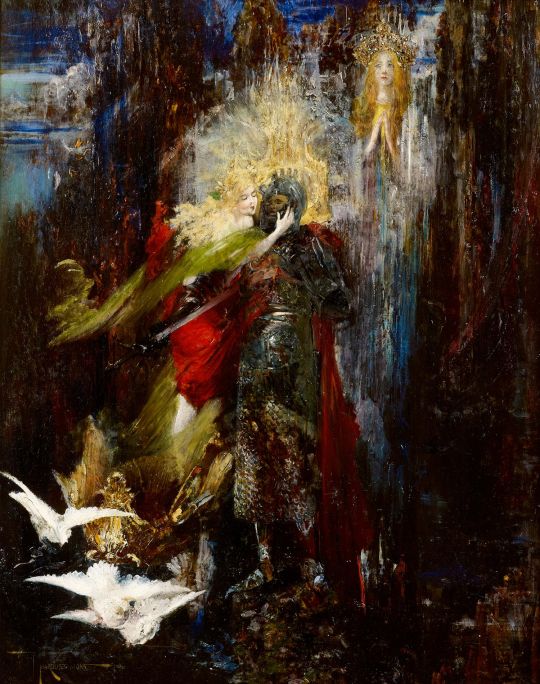
The Apparition of the Grail to Percival, Pinckney Marcius-Simons, ca. 1904
#art#art history#Pinckney Marcius-Simons#mythological painting#Arthurian mythology#Arthurian legend#Arthuriana#Grail Cycle#Holy Grail#Sir Percival#illustration#Richard Wagner#Parsifal#Symbolism#Symbolist art#American art#20th century art#oil on panel#private collection
801 notes
·
View notes
Text




Oh no, help, I'm having way too much fun with the Mid-Century Style! Here's the Googie-Gang's individual walk cycles in fun colors.
#fallout#phana-banana#fallout fanart#fanart#animation#walk cycle#dogmeat#the ghoul#lucy maclean#maximus#mid century#retro aesthetic#colors that made my eyes bleed but was so worth it#I HATE using watermarks
235 notes
·
View notes
Photo

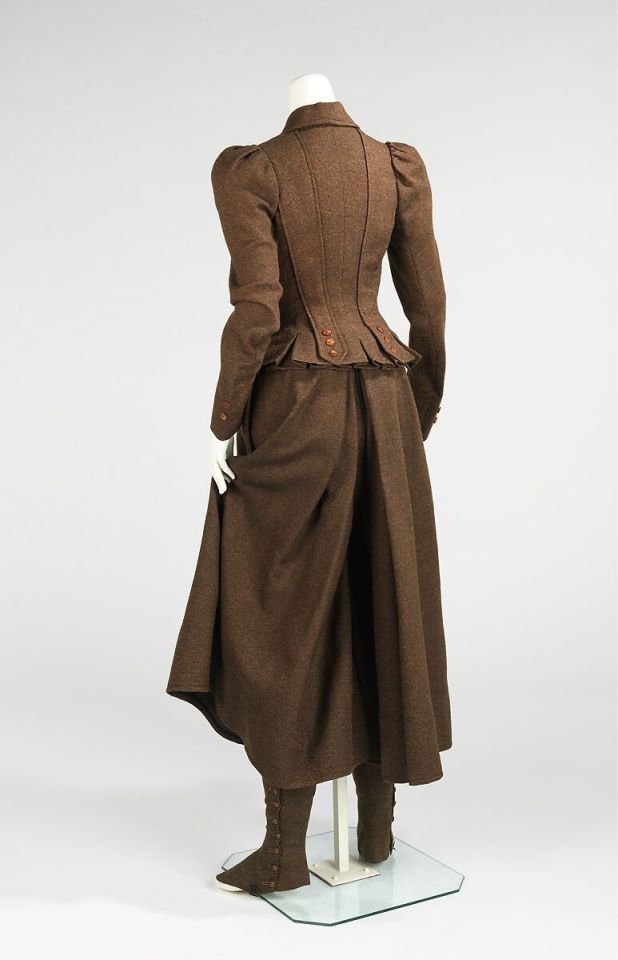

Cycling Suit | c.1896-1898 | American
2K notes
·
View notes
Text
We’re in one of the oldest fandoms where the canon itself is long lost and the source materials for us to draw inspiration from are those of the earliest fanfics themselves—two of which being commonly accepted as beta canon due to their top quality. Sometimes these fanfics contradict each other due to all sorts of OOCs and inconsistencies which is forcing us to choose our own sources to rely on to draw fanart and write fanfics. Each generation of fanfic writers are introducing more headcanons in their works and sometimes their fanfics of fanfics become so popular that they are prompting new sub-fandoms to emerge, inspiring more people to draw fanart and write fanfics for these fanfics of fanfics. It’s almost as if there is a family tree of fanfics and we’re now reaching the third generation and beyond
#from a Neoanalytic POV#tagamemnon#greek mythology#the epic cycle#the theban cycle#feels like this might’ve been said multiple times before but I’m now adding my voice anyway#and if anyone questions the validity of the fandomization of this#just remember that it’s the sense of community that brings together over two thousand years of people from all over the world#it’s a tradition that spans over centuries and is still expanding rapidly#the iliad#the odyssey#homeric epics#greek tragedy#the aeneid#metamorphoses#divine comedy#ulysses#hadestown#epic the musical#aristos the musical#I can go on but you can see how this goes#we have Greek fanfics and Roman fanfics and Renaissance fanfics and now modern fanfics#the difference being that the earlier they are written the more acceptable their headcanons are#in the end we’re all writing fanfics for a bunch of people long dead more than three thousand years ago#feeling a bit more at ease now aren’t you?#Lyculī crustula
106 notes
·
View notes
Text
consider: demiromantic blupjeans who make rings for each other out of their own dry and bleached-white bones because they're little freaks (affectionate), but also because of the added symbolism of aro-spec white rings. consider demi blupjeans where the time they spent falling for each other is just as important and meaningful to them as their love itself
#taz#taz balance#taz balance spoilers#blupjeans#lup taaco#barry bluejeans#sometimes i forget this isn't like. a popular headcanon for them#because like? the way they didn't catch feelings for each other until cycles deep into the century?#the way they spent even more decades not knowing what to *do* with those feelings#in a way consistent with people who might not have *had* those feelings before?#i'm kinda obsessed with it. i'm kinda obsessed with the way the stolen century changed everything for them by giving them time#NOT in a way like “not being able to fall in love would be a tragedy”#but in the way that it gave them time to *realize* something about themselves that they probably wouldn't have otherwise#aspec taz
218 notes
·
View notes
Text
I was going through my great grandfather's memoirs (born 3 March 1880) and came across this part, which feels eerily similar to our current times:
Our biggest handicap was the Spanish Flu epidemic of 1918. With men off sick we were lucky to have 50 staff. Some would come back and more would go off. I was off two weeks myself. There were many deaths in the city.
The war was over and the men were returning from France. We were working a fifty hour week. With the men returning, the trend was to repress wages and frown on a reduction of working hours. My responsibility had been increased so as I was next to the superintendent. This was fine, except my wages were the same as the day I started. They said, "You are doing a good job, but with the men returning that is all we can pay you." There was general upset. The returned men were dissatisfied with the wages offered, not only with our company and the warehouse business, but with what was being offered in general.
He then goes on to explain how they met with the Trade and Labour Council to form a union and present their demands (which were union recognition, basic wage of $180.00 a month, an eight hour day in a year's time, and a two year contract), but it all went to hell because of spies reporting back to the bosses and scabs who refused to honour the strike.
After the second day they flooded back like sheep. At Ashdown the travellers and buyers worked the warehouse without interruption of service. The strike was a washout. I was out of a job!
The night before the strike was scheduled to start the bosses even resorted to the closest they had to social media 105 years ago.
The Evening paper carried an advertisement, by all companies concerned, advising that all employees absent from work for three days, would be discharged.
(The memoirs are 180 typed pages, so I may post more bits as they catch my eye)
#Canadian history#strike#solidarity#history is an ever repeating cycle#personal#memoirs#Great grandpa was an awesome dude#absolute badass#unrelated but his grandfather - so my great great great grandfather?#was a WEAVER in the New England States woolen mills before they moved to Canada in the 'early part of the nineteenth century'
209 notes
·
View notes
Text
Working theories about the processes at work in the Babyfication of Cú Chulainn in the 17th-19th century Ulster Cycle tales:
All of these late stories position themselves as taking place before Táin Bó Cúailnge. This is obvious from the fact that Fer Diad is present in lots of them, but is also just narratively convenient for them, I think.
Cú Chulainn is 17 in TBC, so our starting point is that he must be younger than that.
Generally these stories position themselves as occurring after Tochmarc Emire/Foglaim Con Culainn. Again, this is partly evident from the presence of Fer Diad. Some of them overlap slightly with it.
Cú Chulainn's age in TE isn't stated outright, but following the Boyhood Deeds, he might be as young as about 6.
He must therefore be aged between 6 and 17 when all these stories take place.
Tóruigheacht Gruaidhe Griansholus, the oldest of these stories (1679), states that he is 15 -- presumably with the primary intent of firmly locating the story before TBC. The Ulaid are concerned about the idea of him going off an international road trip alone because of his age, and express this concern, but he does it anyway. His youth is occasionally referenced, but on the whole he is much as he appears in earlier texts: a skilled and precocious warrior.
Eachtra na gCuradh and Coimheasgar na gCuradh come next (early 18th cent). They notice this detail in TGG and decide to elaborate on it further: Cú Chulainn is younger than 15, and is going on adventures only in the company of other warriors; it is occurring pre-TGG, making that his first solo adventure.
Because he is too young to go on adventures by himself, and because those responsible for him are frequently concerned for him, this gives the impression that Conall et al are babysitting him.
Eachtra na gCuradh appears to take place before Coimheasgar na gCuradh. CnC introduces Láeg and by the end of the story, he and Cú Chulainn have teamed up, ready for TGG. Conall appears slightly less protective of Cú Chulainn, so we can conclude he is slightly older than he was in EnC, when he is very baby (and when Láeg wasn't yet on the scene).
His age is not stated outright in any of these, but I would guess he's aged between 10 and 14. This is based purely on relative chronology and may not hold up to close scrutiny.
Sgéalta Rómánsuíochta are the latest stories (maybe 18th century but preserved in 19th century version). They're not super interested in Cú Chulainn, preferring to foreground other characters. His babyfication makes this easier, since he can appear as a child sidekick (to Ailill Fionn, in the first story), or in a similar capacity to EnC and CnC -- the youngest/most junior member of a group of warriors. Across the four stories, he could be anything from about 7 to about 14 again.
Theories about intertextuality:
Tóruigheacht Gruaidhe Griansholus and Coimheasgar na gCuradh both provably draw on the Stowe version of Táin Bó Cúailnge. There are details that can't have come from any other version of TBC (or any other text that survives). They are not the same details in both texts, so it's not that CnC drew on TGG: both drew on Stowe.
Since EnC is probably by the same author as CnC, we can assume he also had Stowe.
EnC's inclusion of Manannán mac Lir might suggest knowledge of Serglige Con Culainn.
CnC alone of the very late tales (i.e. EnC onwards) includes Láeg, with characterisation details that obviously come from Stowe TBC. Again, it doesn't seem to derive directly from TGG (there's a detail I'd expect to see there if it did); both go back to Stowe and so have similarities but have developed them differently.
All of them are probably drawing on Foglaim Con Culainn; in some places it seems like there might be some reliance on Oidheadh Con Culainn as well. There might be some evidence of drawing on Oidheadh Chonlaioch, particularly the attribution of teaching to Aífe rather than Scáthach, although I know there are also late verse versions of this that might be a source rather than the prose.
SR may be more distant from its source material with heavier reliance on these intervening texts -- there are lots of phrasal similarities between EnC/CnC and SR, but Ó hUiginn disputes the earlier proposal that they were all by the same author and thinks SR are definitely later.
That's what I've got so far. I doubt anyone has suggestions because I don't think anyone has cared about these texts for a couple of centuries, but if you do, hit me.
I am partly writing this post so I can keep track of these thoughts for later, although my PhD corpus ends with TGG, so I won't be talking at length about the others there. (They may come up in passing, though.)
#finn is not doing a phd#ulster cycle#now corrected because i got confused between EnC and CnC in terms of which one contained Manannan#i have read so much 18th-19th century irish lately
71 notes
·
View notes
Text
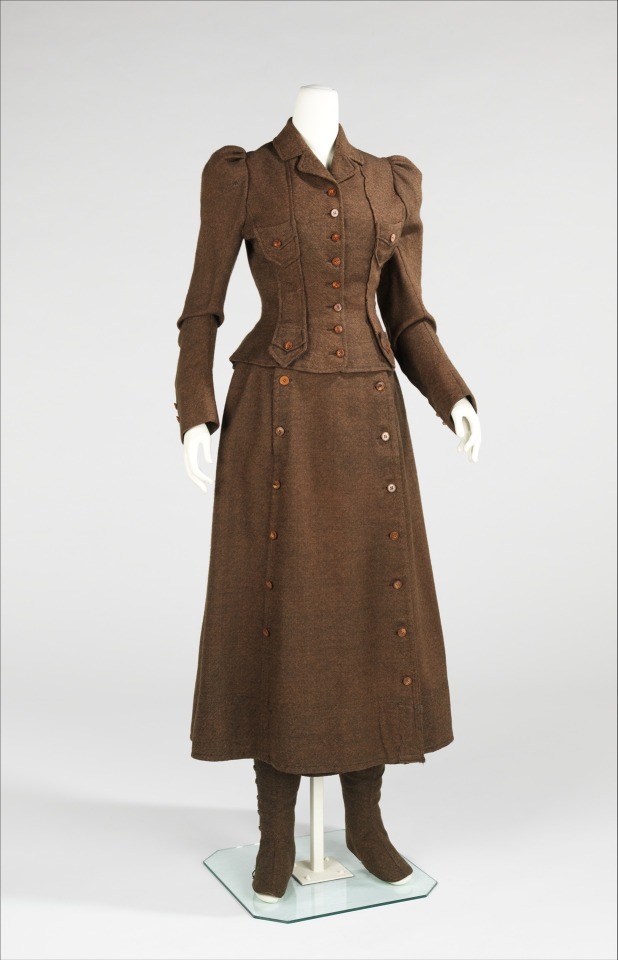
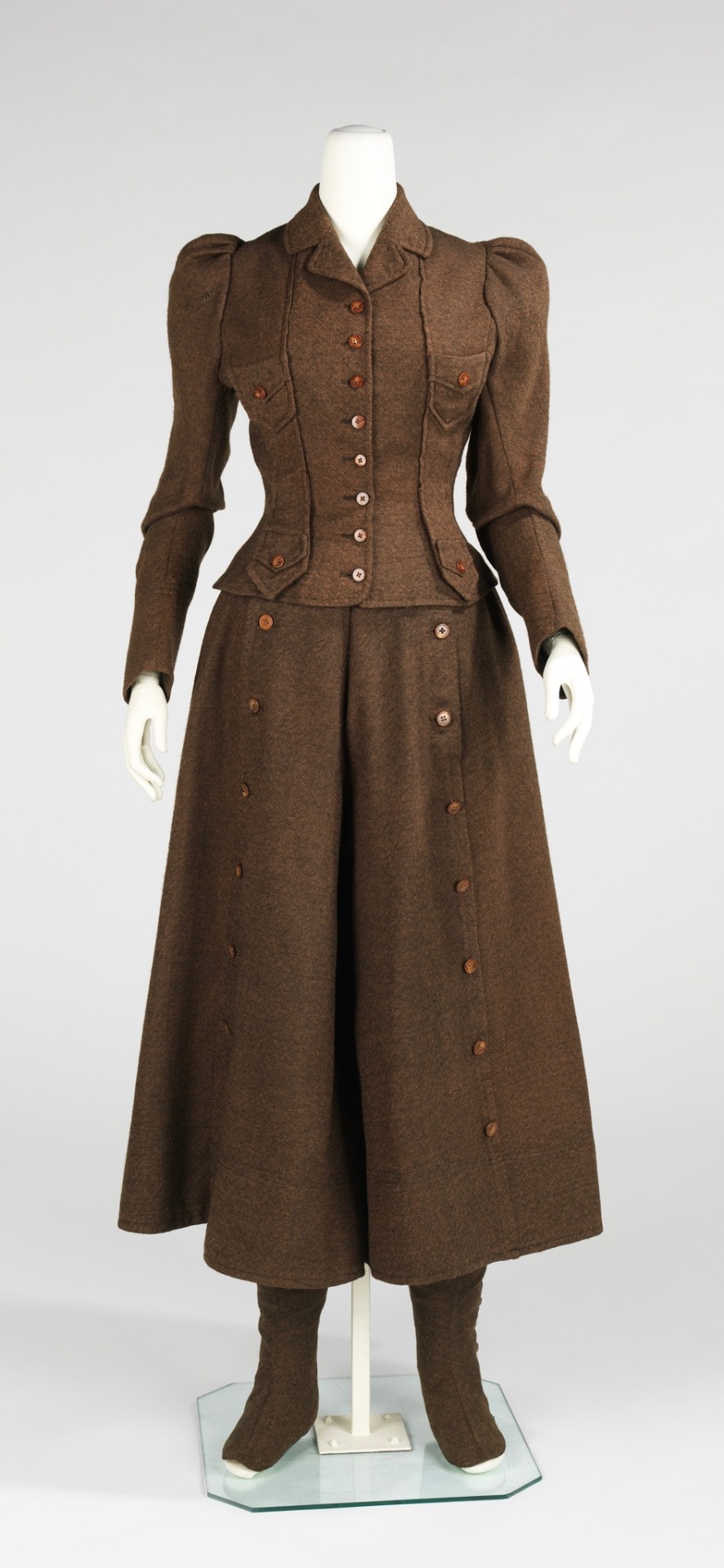
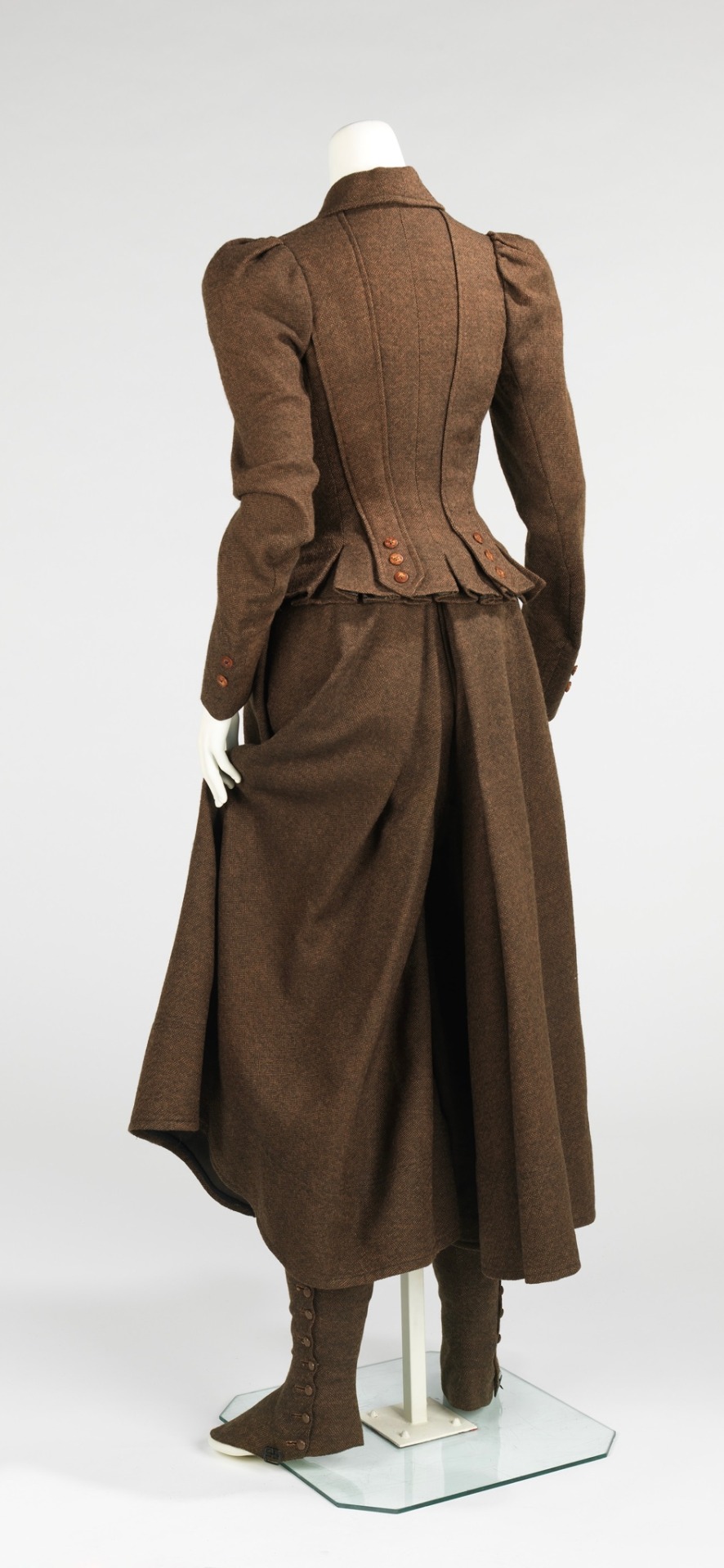
Brown wool cycling suit, 1896-1898, American.
Met Museum.
#brown#wool#womenswear#extant garments#suit#cycling#cycling suit#1890s cycling#1896#1890s#1890s usa#1890s extant garment#19th century#met museum#american
193 notes
·
View notes
Text

Never forget
#SHE'S SO ICONIC#trapped for centuries someones finally showed up to free her#and she threatens gansey with mpreg. absolutely batshit i love her#gwenllian#the raven cycle#trc#blue lily lily blue#gansey#richard gansey#richard gansey iii#WHAT THE HELL TAG AM I SIPPOSED TO USE FOR GANSRY OMG#bllb
517 notes
·
View notes
Photo

Alfred Eberling. Dvortsovaya Embankment, Saint-Petersburg. 1899
I Am Collective Memories • Follow me, — says Visual Ratatosk
#BW#Black and White#Preto e Branco#Noir et Blanc#黒と白#Schwarzweiß#retro#vintage#Alfred Eberling#Dvortsovaya Embankment#Saint-Petersburg#1899#1890s#19 Century#XIX century#bike#cycling#street photography#Photographie de rue#Strassenfotografie#fotografia de rua#ストリートフォトグラフィー#cities#cidades#villes#都市#Stadtbild#paysage urbain#paisagem urbana#シティスケープ
40 notes
·
View notes
Text

The Grail Castle, Hans Thoma, 1899
#art#art history#Hans Thoma#landscape#landscape painting#landscape art#Arthurian legend#Arthurian mythology#Arthuriana#Grail Cycle#Grail Castle#Symbolism#Symbolist art#German art#19th century art#oil on canvas#Schloss Oberzwieselau
338 notes
·
View notes
Text

Lady with a bicycle in Sviatoshyn near Kyiv (now - a neighborhood in Kyiv), early XXth century
59 notes
·
View notes
Text
TikTok TSOA fans are so funny because they’ll swear up and down that they despise Achilles and “only read it for Patroclus who was sweet and innocent and did nothing wrong 🥹🥹” like ijbol u people are not serious. Hate Achilles all you want, he did do bad things, me personally I hate him for sacking certain Trojan cities and refusing the embassy, no one’s denying that he was wrong and that he was a bad person at times, but loving a character does not equal justifying their actions for one thing and to act like any character from the illiad was a paragon of perfect morality is fucking insane. ( Yes, even Hector, everyone’s favorite “🥺he was such a perfect husband🥺” man of the month ) It’s literally so crazy to say that Achilles was the only one of the two of them to actively commit bad deeds and war crimes during the WAR they were in. Just close the damn book I’m sorry but obviously a book with morally ambiguous and dark topics are not for you at this point. Like I get your point, what Achilles did was bad, it’s not like majority of people DONT agree with that point.
But characters are not supposed to be FLAT. They are not supposed to be all good or all bad. Your insistence that Patroclus was only a good person does not make him a good character. It actually makes him really fucking boring. I’m getting way too passionate about this but like I’m so over everyone acting like
1) Achilles was the worst person to exist in Greek mythology history when he’s not even the worst fucking person in the illiad itself 😭 ( that honor goes to Paris, Zeus, Aphrodite, and Agamemnon <3 )
2) A character can only be liked or appreciated or even just talked about if they fit modern ethical standards
Like every conversation I see about TSOA, any video on TikTok, there’s always a comment that has to bring it up like “I only liked Patroclus and he was an unreliable narrator so Achilles was actually much worse” Like okay we get it, God, fuck off please!
Also the whole thing between him and Apollo. PLEASE. Those two are two sides of the same exact coin. I think Apollo was justified in killing him but yall act like Apollo has not done the same if not worse than what he killed Achilles for. And that’s. FINE. I still love Apollo! For all the good and the bad that he does I think he’s the most interesting Greek God on the Pantheon and in the Illiad he’s actually one of my favorite characters to hear from. And I don’t expect the Greek god to act with good moral intentions. I expect him to act like a Greek god. I expect Achilles to act like a Greek demigod. Which is, exactly the way he acts. Maybe yall expected something different. If you wanted a short sweet story that happened to be queer with two perfectly acceptable, 100% goody two shoes main protagonists, please drop the classics inspired books and watch heartstopper.
#also if your only argument against Achilles is myths that were not in the original epic cycle#Then what are you even doing here#also consider the themes of the story#Achilles serves as a lesson#he is a cautionary tale#YOU ARE NOT SUPPOSED TO JUSTIFY THEY THINGS HE DOES#you are given the reasons for why he does them#and you are shown why these actions#and what led to them#ARE BAD#the illiad#achilles#trojan war#patroclus#patrochilles#god I can’t stand tik tok opinions#like can we not like anti hero and anataginists characters anymore#Homer: war is a bad thing that pushes people to do things they don’t wish to do for meaningless rewards#Classic authors for the next few centuries: oh my god Achilles I can’t believe you did that that was so uncalled for#Roman propaganda authors would LOVE you idiots#rant
30 notes
·
View notes
Text


Maxfield Parrish- "Wagner's Ring of the Nibelung Part I"
#maxfield parrish#illustration#die nibelungen#wagner#wotan#odin#the ring cycle#art#19th century#valhalla
20 notes
·
View notes
Text
So, having finally come to the conclusion of Astarion's questline--having romanced him, too--I think I finally understand what bothers me about the whole train of thought of "fixing him" that seems so pervasive. It's that helping him choose to be the better person, to do the objectively right thing, IS NOT the start of a redemption arc. There is no real redemption for anything he did in the past 200 years; he says this himself. There is no "fixing" anything, people's lives have been irrevocably ruined, STOLEN from them, and he may not have done it himself but he is 100% to blame for having gotten them there in the first place. HE KNOWS THIS.
There is zero redemption for Astarion, but again his story isn't about redemption. Astarion's story is that of a victim overcoming the centuries of trauma and abuse and deciding, no, I can be something BETTER than what you made me. I CAN BE BETTER THAN YOU.
Astarion, with enough care and pushing from the PC, can choose to end the cycle of hatred and abuse by cutting it off at the source. From there he can choose to cast it off and free the other victims rather than using them for his own ends. He can make the choice to BE BETTER. That does not absolve him of his guilt, which he has pointed out several, SEVERAL times previously, and he'll have to live with that. BUT he gets to live it as a free man making his own decisions and having cast off the shadows that bound him into a form he no longer recognized.
Astarion does not need to be redeemed and the writers knew this. What he needed was someone who cared enough to show him that he could be better than what some abusive cockwaffle told him he could be, that freedom did not have to come at the expense of other victims, and that not everyone in the world only wanted to use him. Astarion is as much a victim as everyone else, and you can see how Cazador's exact thought processes went if you talk to the skull of his sire. That is what Astarion can be, depending on your own choices and how you approach him, or he can be himself and take the time, once the tadpole situation is dealt with, to figure out EXACTLY who that is now.
#bg3#astarion#bg3 spoilers#minor spoilers#this man does not need a redemption arc#and making the arguably better choice does not put him on the path to one#he is who he is for better or worse#but honestly he hasn't known who he is in two centuries#hell he was barely old enough to know who he was before he was turned#so now he's broken the cycle#given the other victims a modicum of peace#and offered safety even if it's temporary#and only surface level#and now he can look to the future and figure out who he is#and he has friends by his side who can help him#and in some cases someone who loves him truly and sincerely#anyway yeah food for thought
86 notes
·
View notes
Text

The Preparation for Ajax's Suicide (Black-Figure Technique, Amphora by Exekias), Greek 550-525 BC, Château-Musée de Boulogne-sur-Mer, France.
We know the story, how Aias the son of Telamon (or Ajax the Great) loses his senses because of Athena and attacks a flock of sheep because the armor of Achilles was given to Odysseus instead of himself. Ashamed by his action and horrified he comits suicide by throwing himself on his sword.
Even if the vases depicting his suicide are extremely powerful I think nothing tops this masterpiece! Not only we do have the amazing tecnique of Exekias with the amazing engraved details from the Gorgoneion on the shield till Ajax's hair and beard

The methodical way he prepares himself for the end is giving such a tension in the atmosphere! And so much contrasting his madness that brought him there! There is a slow pace here that prepares you for the end! He almost seems to be patting his sowrd with care! The fall of a great warrior that is about to go down ashamed!
but also by the amazing thematic. The tension is so much greater because we see how Ajax prepares himself for the end. He is alone. There is no one around but a palm tree (ironically the palm tree is called "phoenix" in greek, similar sounding to the bird phoenix that signifies death and rebirth) wich is there only to show where he is.
His armor is placed to the side and he himself is naked; stripped off anything that made him a warrior. The way even his face shows his tension in this seems great to me.
And the way he places the sword to the ground and makes sure that the sword would stay still and steady as he is ready to fall on it!
~~
Ajax is mentioned to my analysis here as well as to the third part of my faniction The Death of Odysseus
#tagamemnon#greek mythology#homeric poems#ajax the greater#telamonian ajax#sophocles ajax#ajax#exekias#amphora#ancient greek poetry#heroes of trojan war#troy#trojan war#ajax and odysseus#odysseus and ajax#tw: mental health#cw suicide#katerinaaqu analyzes#ancient greek mythology#sophocles#epic cycle#athena#odysseus#black figure potery#greek art#6th century bc#telamonian aias
19 notes
·
View notes